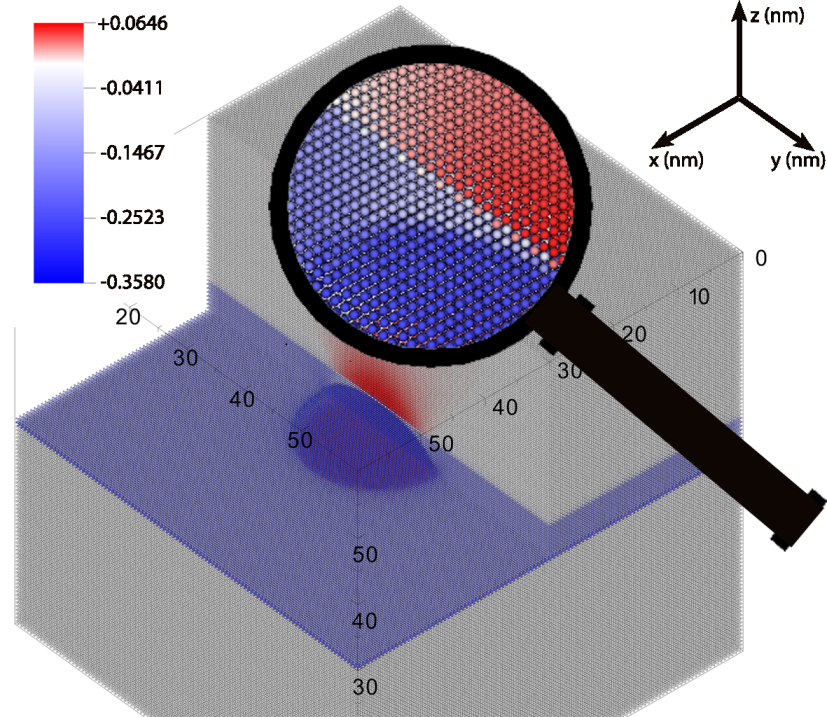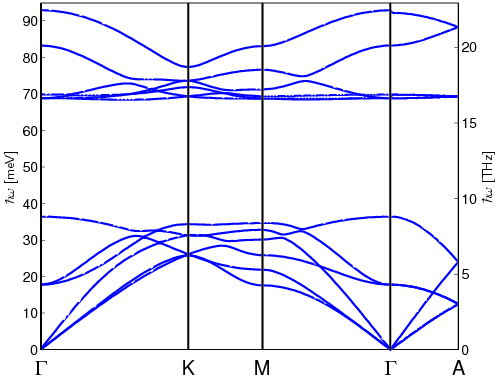Capabilities - Strain and Phonons
Strain in Nanostructures

Figure: Biaxial strain exx+eyy-2ezz in a large InAs/GaAs quantum dot.
Many nanostructures are made of materials with the same crystallographic structure but with different lattice constants, i.e. the bond lengths of the bulk materials would differ. Such nanostructures exhibit strain, i.e. an internal deformation of the atomic positions and the bonds in between them. Strain has a large effect on many properties ranging from electronic energies to conductivities and plays a decisive role in the performance of today's production-line CPUs.
NEMO5 has the ability to calculate the atomic displacements as well as the resulting strain tensor and piezoelectric polarization using the atomistic valence force field model. The short-range nature of the model allows for detailed insight into the behavior at interfaces as well as the treatment of very large structure consisting of millions of atoms.
Phonon modes

Figure: Phonon band structure of wurtzite-type GaN, calculated with the Keating valence force field model augmented with the Coulomb interaction.
Interest in phonon properties of bulk and nanostructured materials was recently revived due to the field of thermoelectrics and related questions in energy efficiency. NEMO5 uses the same valence force field model that it uses to calculate static strain relaxation problems in order to obtain phonon band structures.
